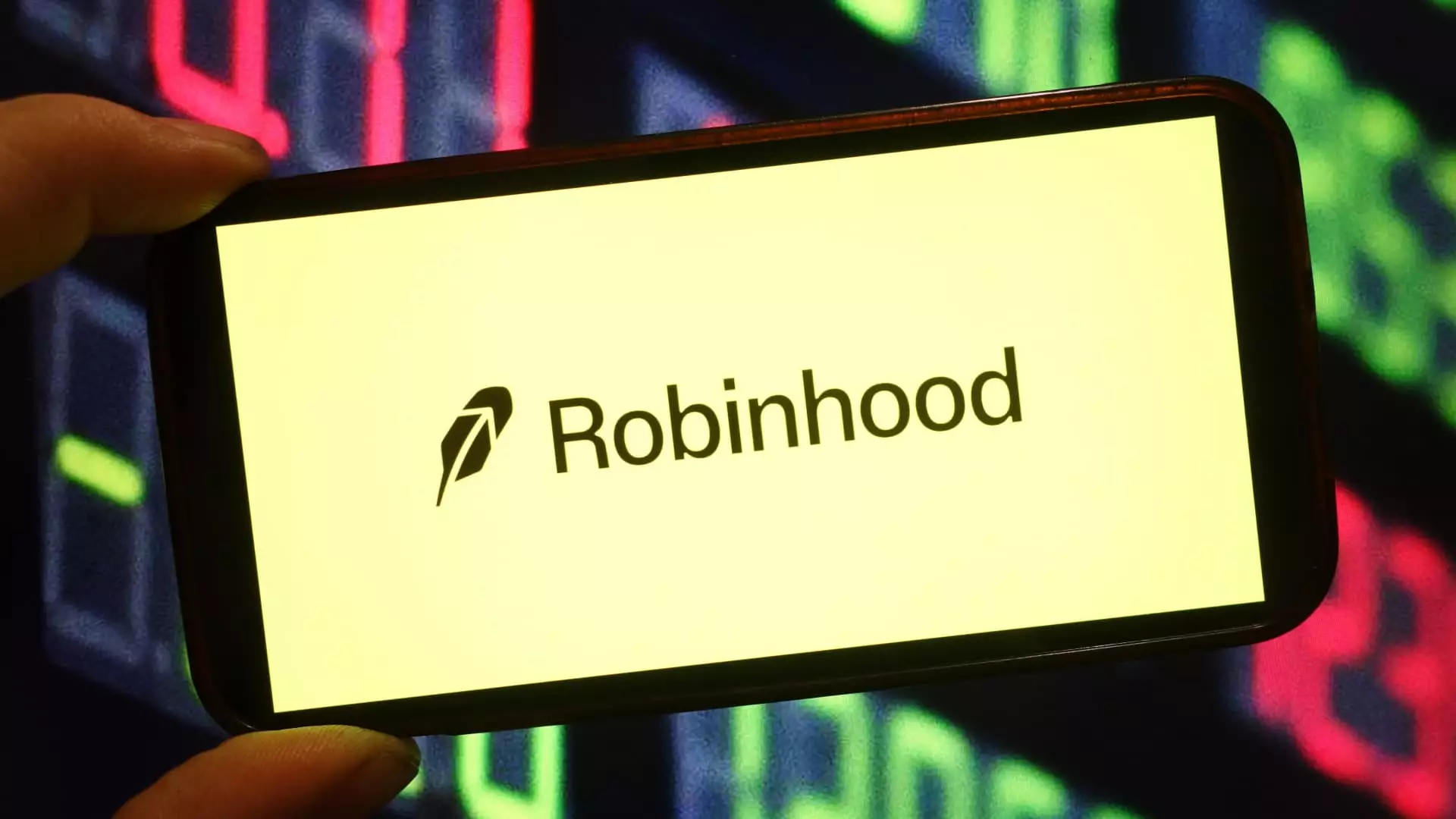In the flurry of market enthusiasm spurred by the new political landscape under President Trump, retail trading platforms like Robinhood have enjoyed a significant boost. However, as shares recently fell over 11% in a matter of days, it begs the question: is this just a temporary high or a classic example of market over-exuberance? The buzz around cryptocurrencies has undeniably fueled trading volume, but as market analyst Courtney Garcia pointed out, much of this has already been factored into Robinhood’s stock price. Investing based solely on hype from political narratives can often lead to disillusionment, especially in a market as volatile as cryptocurrency.
While the initial spike might have been irresistible for many investors, caution should be the mantra. If we’ve learned anything from previous market booms, it is that inflated valuations often precede significant downturns. Garcia’s recommendation to “stay away” from Robinhood serves as a wake-up call for those caught in the wave of speculative trading. Investing is not just about chasing trends; it’s about understanding the long-term sustainability of a company and whether its growth prospects justify its valuation.
AT&T: A Reliable Backbone or Just a Cautious Investment?
On the other side of the investment spectrum, we have traditional giants like AT&T, which is being hailed as a value story in today’s complicated market environment. Garcia’s insight into AT&T’s commitment to reducing its debt—combined with a robust plan for share buybacks—paints a picture of a company striving for stability. While many analysts rate AT&T shares as a solid buy, one has to wonder if this is merely a safe haven for conservative investors looking to avoid the turbulence associated with tech stocks and cryptocurrencies.
Investors are often driven by FOMO (Fear of Missing Out), yet picking legacy companies like AT&T can be akin to navigating through a dense fog. While the company does boast a commendable dividend yield of about 4.27%, the question remains whether its growth potential is enough to attract younger, more aggressive investors who are increasingly leaving traditional investments behind. AT&T could be a stable option during economic downturns, but for those seeking explosive growth, this tech-averse attitude might not be the best approach.
Johnson & Johnson: The Steady Ship Amid a Turbulent Sea
When we turn to Johnson & Johnson (J&J), we enter yet another arena of mixed sentiment. Garcia views J&J as an enduring value company, ideal for those who lean cautiously into their investments. This pharmaceutical giant has demonstrated a remarkable resilience during economic crises, heavily relying on its reputation as a dividend-paying stalwart. Yet, does reliably good always equate to great?
Relying on history to forecast future performance can be folly, particularly for a company facing increasing competition and regulatory scrutiny. J&J may indeed be somewhat “neutral,” as Garcia suggests, but it’s essential to dissect whether this reflects a lack of growth potential or a thoughtful strategy in a constantly evolving marketplace. J&J pays a yield of approximately 2.99%, which could appeal to investors looking for income, but for those chasing capital appreciation, it may simply represent a safe harbor that won’t keep them warm during turbulent financial storms ahead.
Navigating the Investment Landscape: The Slippery Dangers of Short-Term Thinking
In a market governed by impulsive decisions and social media-driven narratives, understanding the implications of a “risk-on” trade can be daunting. The urgency to invest in stocks like Robinhood driven by short-term gains can overshadow the critical assessment of long-term viability. With volatile platforms often experiencing dramatic rises and falls, a well-informed investor must adopt a mindset that prioritizes substantive insights over surface-level performance metrics.
The current investment climate demonstrates the importance of scrutinizing market anomalies and questioning the sustainability of hype-driven valuations. For many, the aim should be to foster a diversified portfolio, engaging in stocks that offer both growth and stability, rather than irrationally chasing the latest trends. Investing is inherently risky, but focusing on companies with solid fundamentals may yield fruitful returns rather than emotional rollercoasters that ultimately lead to losses.
With the market teetering on this precarious cliff, striking the right balance between cautious optimism and prudent assessment will be essential for navigating these uncharted waters. Investors would do well to remain vigilant, discerning, and ever-aware of the potential pitfalls lurking just around the corner.


Leave a Reply